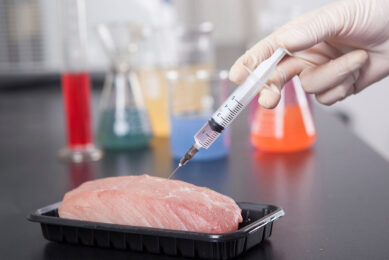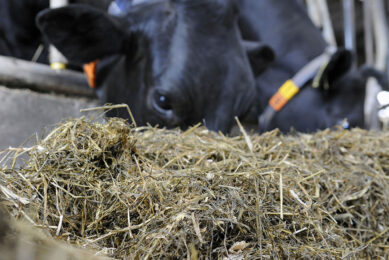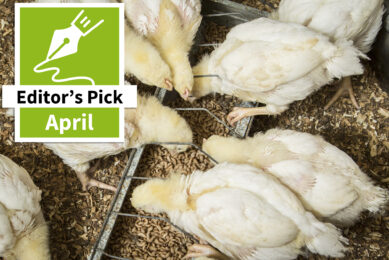“Feed additive use needs reconsideration”
Feeding additives to dairy cows is often worth the money. However, you need to look at additives as a proper enhancing opportunity, rather than fixing a problem or minimizing return losses, said Michael Hutjens, University of Illinois, Urbana, Extension dairy specialist in the latest Farm & Ranch guide.
You may be considering monensin to improve feed efficiency for lactating cows
or using probiotics for calves, but no matter what the additive, the dairy
producer needs to have a strategy for when he or she will use it. “If the dairy
farmers puts monesin in the ration because the butterfat component went down –
that’s a management issue, not a feed additive issue”, says Hutjens. “The
monesin is the canary in the rumen, and monensin is simply going to point out to
you that you are in trouble.” Look at additives as an enhancing opportunity
rather than fixing a problem or minimizing return losses, he
added.
Other ways to reduce feed costs
Hutjens says the best
economic value comes from feeding monensin or zinc methionine with returns on
investment of 14 to 1. However, the dairy producer may also be able to get a
break using less expensive soybean meal. Raising hay for less than you can buy
it is another way to reduce feed costs. Distiller’s dried grains with solubles
can also bring feed costs down. “If you’re not feeding distillers, then
obviously you are a rich farmer, because you don’t want to keep your feed costs
down,” Hutjens said.
Feed additives may play an important
function
Hutjens encourages producers to reconsider the function of each
feed additive. For instance, cows may need bi-carb – and more than they needed
it five years ago – because they are eating more than they did five years ago.
Here are the feed additives that Hutjens recommends for dairy cows:
– Yeast
culture for transition cows to stimulate fiber-digesting bacteria, stabilize the
rumen environment and utilize lactic acid
– Propylene glycol for drenching
cows before calving
– Calcium propionate before calving for increased blood
glucose and calcium levels
– Anionic salts to increase blood calcium
levels
– Protected choline to minimize fatty liver formation and improve fat
mobilization in heavy cows
– Bacterial direct-fed microbes to milk or milk
replacer fed calves to improve dry matter intake and health
– Silage
bacterial inoculants to increase feed digestibility and dry matter
recovery
– Protected niacin to improve the energy balance in early lactation
cows
– Monensin to improve feed efficiency in lactating cows
– Sodium
bicarbonate for early and mid-lactating cows to increase dry matter intake and
stabilize rumen pH
– Organic selenium for improved health and immune
function
– Biotin for hoof health and higher milk yield
– Organic zinc
for hoof health and lower somatic cell count
Join 26,000+ subscribers
Subscribe to our newsletter to stay updated about all the need-to-know content in the feed sector, three times a week. Beheer
Beheer









 WP Admin
WP Admin  Bewerk bericht
Bewerk bericht